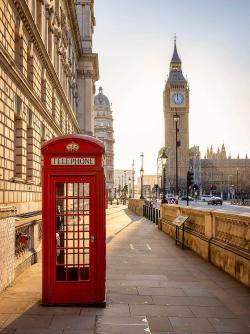Calgary's Water Crisis: A Wake-Up Call
Fresh, potable water is critical for human life—and Canada’s water infrastructure reveals a serious problem.
Nearly three-quarters of the Earth is covered with water. There is so much water on our planet that it looks like a blue ball from far out in space. Water is one of the most vital requirements for life. While some organisms can flourish in salt water, most—including humans—need fresh water to thrive. Although crucial for human life, fresh water is not so readily available, making up just about 3 percent of all water on Earth. And roughly 69 percent of that fresh water is stored as polar ice caps and glaciers, while another 30 percent is hard-to-access sub-surface groundwater. That leaves about 1 percent of all fresh water on our planet readily available for human consumption and renewable through the water cycle—a mere 0.03 percent of the water on Earth.
Water supply is taken for granted in cities across Canada, as in developed areas worldwide. Most Canadians have come to expect access to clean drinking water at the turn of a tap. But what happens when that expectation for something vital to our existence fails?
Broken Pipeline, Shattered Lifeline
Recently, the Canadian city of Calgary experienced a severe disruption that reduced its available water supply by 60 percent. Calgary, in the province of Alberta, is the largest city in the three prairie provinces, which include Manitoba and Saskatchewan. The city’s population is 1.3 million, with an additional 300,000 in the wider metropolitan area. Calgarians are used to dry summers; the city has a semi-arid climate with an average annual rainfall of about half a metre.
However, the abundant water flowing from the Rocky Mountains to the west of the city usually adds greatly to the water supply. Municipal water restrictions have been enacted in the past, but none so extensive or of such a prolonged duration as those put in place during the summer of 2024. At that time, a large water main break on the Bearspaw South Feeder Main, in the Bowness and Montgomery area, disrupted water flowing from the Bearspaw Water Treatment Plant to Calgary’s water distribution network.
Soon after the June 5 break was discovered, city officials issued emergency alerts, warning citizens not to water lawns or gardens, not to shower or bathe, not to wash dishes or run appliances that use water, and to conserve water in any way they reasonably could. At the onset, while the problem was being assessed, Calgarians said they were confused by officials’ communication of the severity of the situation, creating further chaos for citizens of Calgary and the surrounding areas. Still, it was clear that the city’s water infrastructure had been compromised and that usage needed to be curtailed.
Scrambled Repairs and Aging Infrastructure
The broken Bearspaw South Feeder mainline repairs were completed just in time for the July 5 start of the annual Calgary Stampede, along with repairs made to other areas of concern identified by a pipeline scanning device. But further scanning in late July and early August revealed more areas requiring urgent repairs.
The additional work was scheduled to be completed by the end of September, and Calgary officials set indoor and outdoor water use restrictions to mitigate the situation. Commercial and residential restrictions on indoor usage were voluntary. Outdoor restrictions were mandatory, and violation of them was subject to fines from $400 to $3,000. The municipality set outdoor water restrictions at four stages—Stage 1 allowed for minimal watering of trees, shrubs, and gardens by using a spray hose and two hours a week for lawn sprinklers. At Stage 4, no outdoor potable water usage was acceptable.
The level of water restrictions changed several times throughout the summer as city officials tried to balance supply and usage. Some residents chose to abide by those restrictions, although the level of the restrictions was often unclear. Others did not curtail their water usage at all—whether out of frustration or simply a lack of understanding of the situation’s severity. Adding to the confusion, the communicated cause of the break—and the laying of blame—shifted as the summer progressed.
Calgarians will remember the summer of 2024 for years to come—yet the implications of the crisis go far beyond the city of Calgary.
The water infrastructure of major Canadian cities includes pipes that are more than 50 years old. Although those pipes were designed for greater longevity, some seem to be nearing the end of their usefulness much earlier than expected. Also, the increasing urban population has put heavier demands on the aging infrastructure, as water lines of more recently built communities are being tied into the existing older network. Assessing water supply lines, identifying problem areas, and making necessary repairs will involve extensive work and considerable expense. Still, it is crucial to ensure safe drinking water for Canadians. Civic engineers, planners, and politicians in many large urban areas throughout North America saw Calgary’s water crisis as a wake-up call.
And it wasn’t long before that wake-up call sounded again. On August 16, in the province of Quebec, the city of Montreal experienced a water main rupture, creating a spectacular geyser and severely flooding homes and businesses near the downtown core.
Rivers of Living Water
The deterioration of Canada’s water infrastructure is only one symptom of a much more fundamental issue. Our society’s foundations are crumbling around us—family, education, government, and the economy are only the most obvious casualties of widespread moral decay. Mankind has turned its back on God, following a path of its own making and reaping the results.
God did not create us to exist apart from Him; as the prophet Jeremiah reminds us, “O Lord, I know the way of man is not in himself; it is not in man who walks to direct his own steps” (Jeremiah 10:23). God has revealed the way that leads to true prosperity and happiness. Without following His direction, everything in our lives will eventually fail, for “where there is no revelation, the people cast off restraint; but happy is he who keeps the law” (Proverbs 29:18).
Fresh, potable water is essential for human life. When its supply is restricted, it becomes all the more clear that our physical lives are fragile. The prophet Isaiah was inspired to write, “All flesh is grass, and all its loveliness is like the flower of the field. The grass withers, the flower fades, because the breath of the Lord blows upon it; surely the people are grass” (Isaiah 40:6–7). Our human lives have been designed to be temporary. Like all things physical, including our bodies and city infrastructure, they are subject to decay—they will wear out over time.
Though physical things may not have permanence, the prophet Isaiah describes what does: “The grass withers, the flower fades, but the word of our God stands forever” (Isaiah 40:8). Just as our physical lives need the water God has created for us, our spiritual lives need the living water that only He can provide. Jesus Christ said, “He who believes in Me, as the Scripture has said, out of his heart will flow rivers of living water” (John 7:38), and to truly believe in and love Him is to obey His commands (John 14:15). To have a true, sustaining “water source,” we must look outside our physical needs and requirements and seek answers in God’s word.
Our infrastructure is crumbling, and so too is our society—because of our rejection of God’s revelation. Only God’s word, including His law, brings happiness and permanence.






